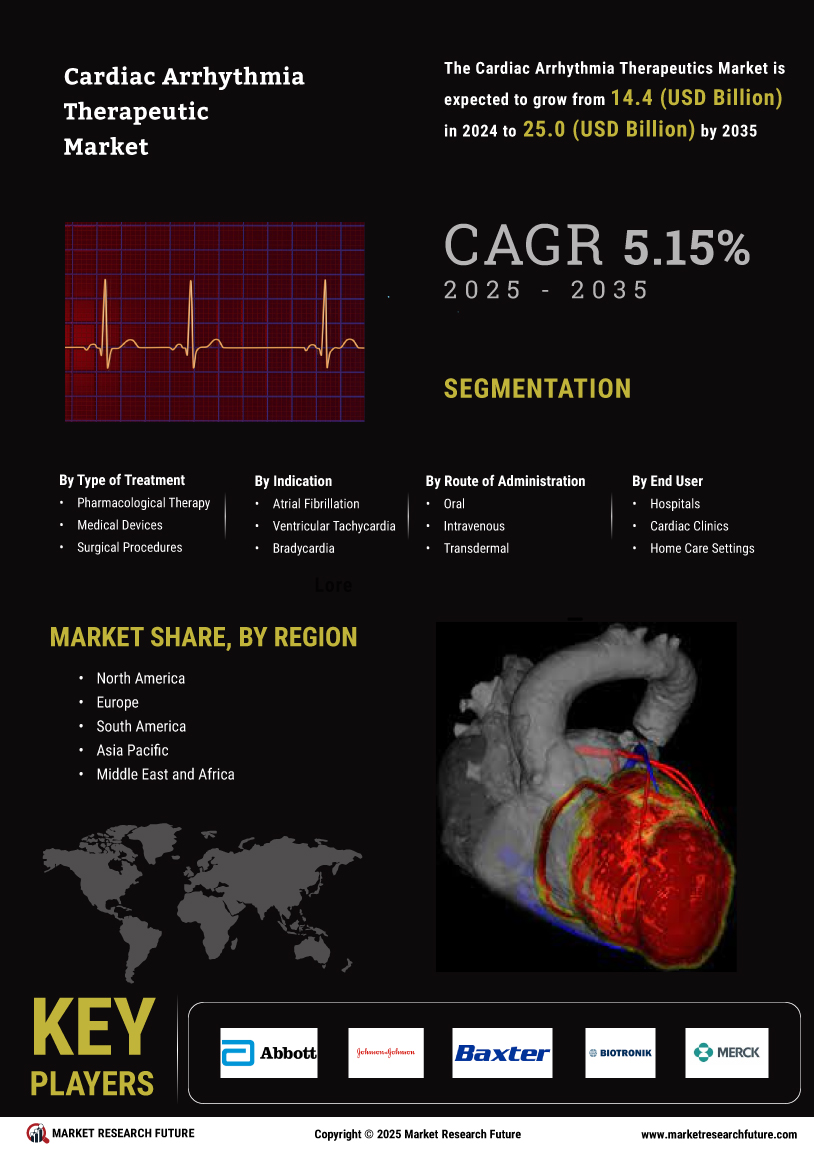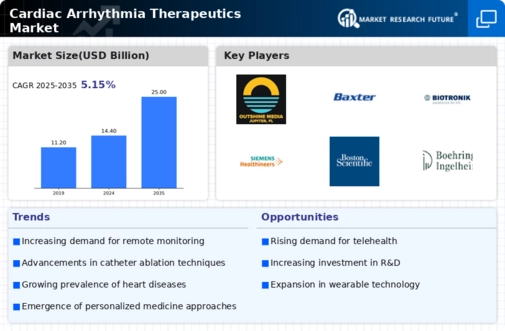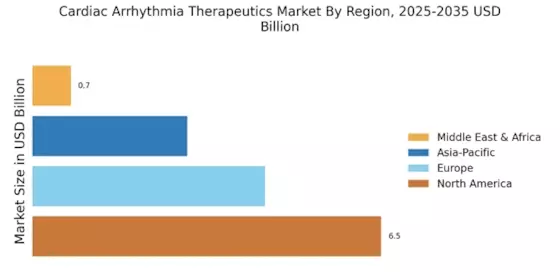The Global Cardiac Arrhythmia Therapeutics Market is marked by a dynamic landscape characterized by rapid advancements in technology, diverse treatment options, and increasing demand for innovative therapies. As cardiovascular diseases continue to rise globally, the market for therapeutics aimed at managing arrhythmias, such as atrial fibrillation and ventricular tachycardia, has seen significant growth.
Competitive insights reflect a robust environment where various pharmaceutical and medical device companies are striving to establish their presence by focusing on research and development, strategic collaborations, and expanding their product portfolios.
Player differentiation is evident through unique therapeutic approaches, adherence to regulatory standards, and responsive customer engagement, positioning the market for ongoing evolution and competitive rivalry.
Abbott Laboratories has solidified its presence in the Global Cardiac Arrhythmia Therapeutics Market through its commitment to innovation and cutting-edge technologies. The company has a well-established product portfolio that includes advanced cardiac monitoring systems, electrophysiology tools, and a range of therapeutic devices designed to address arrhythmias.
Abbott Laboratories stands out due to its extensive research capabilities, enabling the development of new and enhanced therapeutic options. Its focus on minimally invasive procedures and patient-centric solutions resonates well within the healthcare community, reinforcing its competitive advantage.
Furthermore, Abbott's strategic partnerships and collaborations have facilitated wider market reach and accelerated the deployment of its technologies, allowing the company to effectively respond to the diverse needs of healthcare providers and patients alike.
Johnson and Johnson, a prominent player in the Global Cardiac Arrhythmia Therapeutics Market, showcases a strong commitment to enhancing patient outcomes through innovative therapeutic solutions.
The company leverages its extensive experience in the medical device industry to offer a comprehensive suite of products aimed at treating various forms of arrhythmias. Johnson and Johnson's strengths lie in its robust research and development pipeline, enabling it to produce state-of-the-art technologies in electrophysiology and cardiac rhythm management.
Additionally, the company's global presence has allowed it to tap into various markets effectively, ensuring that its solutions are accessible to a broad range of healthcare professionals and patients.
By maintaining a focus on safety, efficacy, and the needs of patients, Johnson and Johnson continues to uphold its reputation as a trusted leader in the cardiac therapeutics field, paving the way for further growth and market penetration.


















Leave a Comment